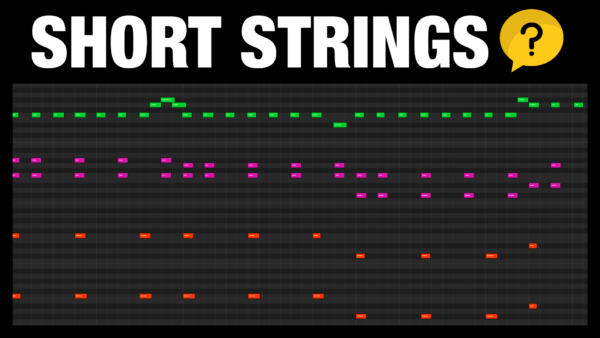 Do you want to write epic short strings, often called ostinatos?
Do you want to write epic short strings, often called ostinatos?
In film music and soundtracks for video games, TV series etc. these types of driving short strings are extremely common, since they are amazing for adding energy and action in your music.
Let’s find out some great tips for writing these epic ostinatos with short strings articulations.
Create Epic Rhythmic String Ostinatos
Tip 1 – Choose your Starting Articulations
Depending on how fast your rhythmic strings parts are, you can set different articulations to start with per track. Spiccato is a very short articulation on strings, that works extremely well for faster ostinatos.
I recommend using it as the main articulation for all short strings with 8th notes or faster patterns.
For any string parts that are going to play slower rhythms you might want to go for a staccato or staccatissimo articulation since they have a longer duration than a spiccato.
Lower parts like basses and cellos usually play the accents, and/or slower rhythms, so staccato works better in most cases on those as a starting point.
Tip 2 – Record the Main Rhythm First
I recommend starting with a full ensemble patch, but you can of course use an individual section like cellos or violins. Then record the main drive first on that track. Make sure it includes the harmonic progression and the overall groove.
For example, if you want to add triplets or any other type of groove, you want to have it in your main rhythm first…so that you can apply it to all other tracks as well.
Tip 3 – Add the Main Accents
Once you have the main rhythm recorded, you can add the main accents with another track, which I recommend should be a lower part like basses or cellos, or a low strings ensemble patch.
You can do it in octaves, so for example basses playing the lowest range accents, and cellos an octave above but the exact same rhythm.
Tip 4 – Write a Counter Drive
Let’s say you recorded the main drive on cellos in the mid range. Then you can add more interest and variation by recording a slightly different part on the violas or any other section or ensemble patch.
Add some rhythmic variation, and some harmonic variation, but make sure you respect the chord progression as well as the main accents.
Tip 5 – Create More Variation
To spice up your epic short strings rhythm section, you can then add some extra fills and transitions. Quick arpeggio runs or scale runs before a bar change work very well.
Also adding some harmonic shifts by changing how the main ostinato and counter drive plays together.
For example, adding an extra note every now and then on one section so that it plays a harmony on those beats, which in effect will work like a “harmonic accent”.
Finally you can also add variation by changing articulation over time on a specific part. Let’s say your cellos play staccato rhythms in the low-mid range. Then you can change some notes to play marcato, other notes to play spiccato, and so on.
Tip 6 – Double Time for Extra Energy
If you recorded your main rhythm in 8th notes, you can try duplicating the notes and move them to the right to create a 16th note pattern. Make sure you reduce the velocity on the repeated notes to get that bouncy ostinato sound.
If you already have a 16th note ostinato you can even occasionally add some 32th notes if your tempo allows it, for an extra boost of energy.
Tip 7 – Polish Timing and Dynamics
Rhythms are always very dependent on the timing for each note. But 100% quantized music is robotic and stiff, so I usually quantize rhythmic parts to around 80%. Sometimes you may need to push or pull a note in the grid manually to make it fit the rhythmic timing.
Finally it is important to polish the dynamics, meaning the velocity values on all parts and all notes. Pay extra attention to make sure all main accents are indeed accented with the note velocity level.
